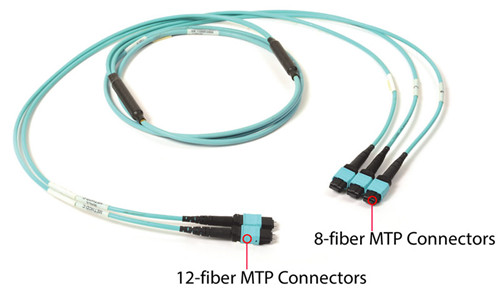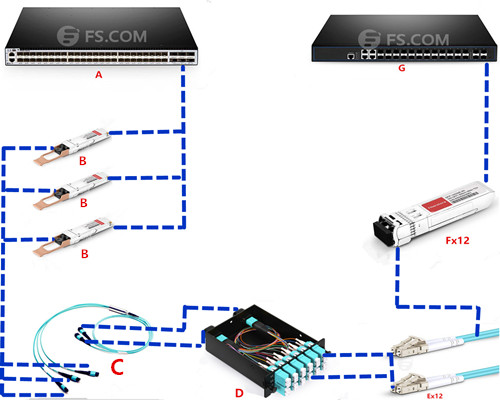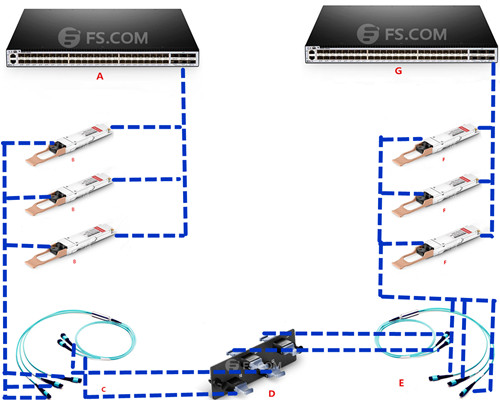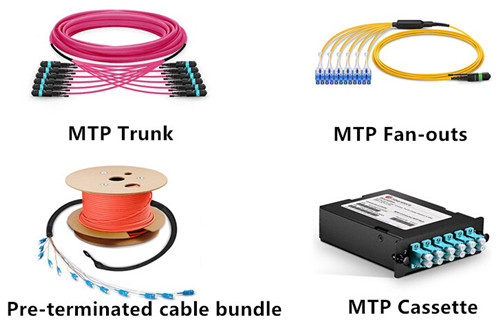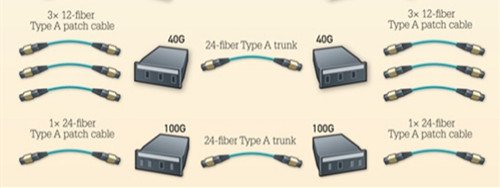Due to the increasing number of connected devices in use and their need for fast cloud-based data processing, the Ethernet interconnect standard widely used in data centers is evolving to move data more quickly and efficiently, which has driven the development of a 25Gbps version of Ethernet. Before 25G Ethernet was proposed, the next speed upgrade for data centers was expected to be 40G Ethernet (using four lanes of 10G) with a path to 100G defined as using 10 lanes of 10G as shown in the following table. However, the 25G Ethernet standard can provide a path to 100G and achieve higher total bandwidth than 40G. This article will discuss the different connection methods between 25G SFP28 and 100G QSFP28 transceivers.
Note: 100G QSFP28 can be interfaced with 12-fiber MTP connector or duplex LC connector. In this post, the QSFP28 modules we mentioned all have MTP interface.
Direct Connectivity Solution
According to standard, since QSFP28 is 100G interface, SFP28 is 25G interface, four SFP28 transceivers must be needed to connect to one QSFP28 transceiver to achieve 25G to 100G transmission. In this scenario, an 8-fiber MTP-LC harness will be required to direct connect a QSFP28 port to the four corresponding SFP28 ports. This harness cable has four duplex LC connectors and the fibers will be paired in a specific way, assuring the proper polarity is maintained. Keep in mind that this direct connectivity method only recommended for short distance within a give row or in the same rack or cabinet.
Interconnect Solutions
Solution 1: This interconnect solution shown in the image below allows for patching on both ends of the optical network. The patching on the QSFP28 end is accomplished by using Type-A non-pinned MTP to non-pinned MTP jumper, which connects to the trunk cable, while the patching on the SFP28 end is accomplished using MTP modular cassette and duplex LC patch cable.
Solution 2: In this scenario, a Type-B non-pinned MTP to duplex LC breakout cassette will be used to breakout an 8-fiber QSFP28 transceiver into a 2-fiber SFP28 patching field. This solution does reduce the amount of system attenuation by removing a MTP connector pair, however, it would be that the port breakout module has a limited tail length. Besides, this cabling solution only works best when the active equipment being connected is within the same row.
Solution 3: This interconnect solution allows for an easy upgrade path moving from 2-fiber to 8-fiber connectivity. To connect to the SFP28s ports use the 8-fiber harness as shown in the following diagram, and an 12-fiber MTP trunk cable would be used from the adapter panel for the QSFP28 connectivity, thus allowing a mix and match upgrade patch without having to change out the patch panels. The SFP28 transceiver ports need to be located in the same chassis, which creates less flexibility.
All the products introduced in the above solutions including SFP28 transceivers, QSFP28 transceivers, MTP breakout cassette, MTP adapter panel, MTP trunk cable, etc. can be purchased in FS.COM. We provide free and the same day shipping to the US now.
